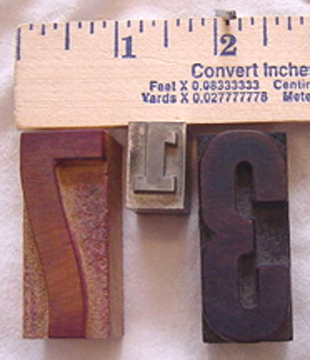Printmaking–in terms of printing for newspapers and flyers–was introduced as another Colonial activity, and students had the opportunity to look at old print type–the kind that was originally set by hand in large plates to create advertisements and newspapers.


They were amazed at how SMALL some of the type was, and they couldn’t believe that the printing process hadn’t changed significantly until the last 40-50 years ago when computers made most hand-setting of type unnecessary.
To try their hand at block printing, students created a small design that featured their initials or their monogram. They started their drawing on “practice paper,” and then drew it onto a piece of white paper that was the same size as their “speedy carve” block.
To transfer their image to the soft rubber carving block, they traced their design onto the back of their paper by holding the paper up to a window and using a pencil. Then they placed the paper “right side down” on the block, and then drew over their tracing on the “wrong” side. There was enough graphite on the “right” side to transfer the image (reversed, of course) to the block.
They used lino cutters to remove any areas that they didn’t want to print, then used water soluble printing ink rolled on with a brayer to make their small prints.



